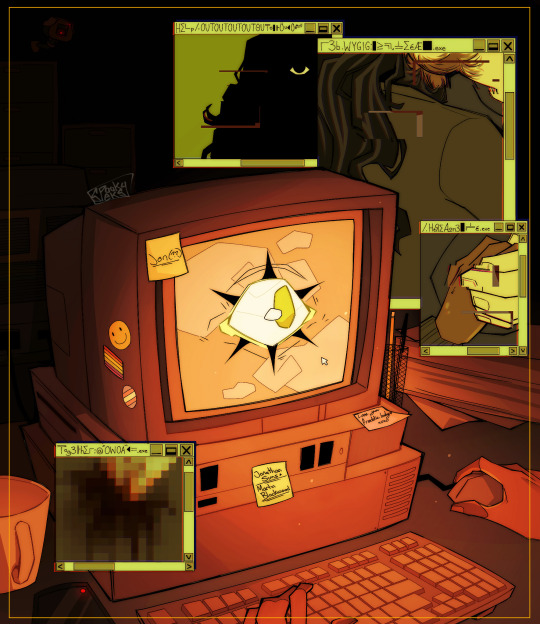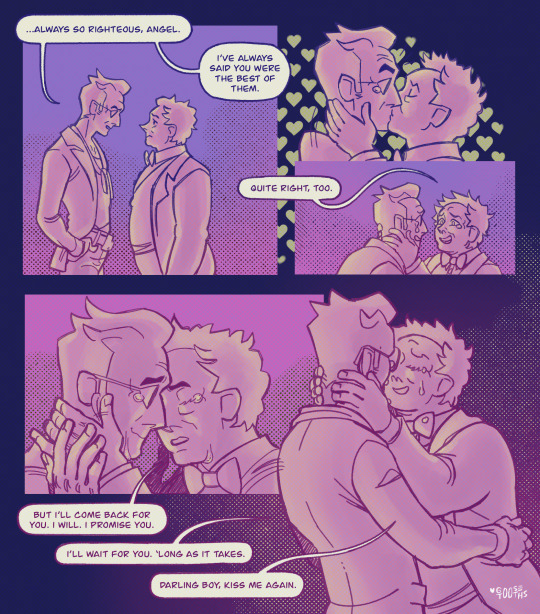Poet! They/them or any neopronouns. IDK what to do with my life any more
Don't wanna be here? Send us removal request.
Text
Let's #SaveDeadBoyDetectives!
Hi everyone!
As you’ve probably already seen on Tumblr, Twitter, Instagram, or even the articles that are already written about how furious the fandom is right now, we are currently trying to fight for Dead Boy Detectives.
There is A LOT that we can do to make some noise and so much is already being done that it’s all getting very overwhelming to keep track of. So I've made this masterpost listing all (or at least most of) the things people in the fandom are trying to do right now that you can absolutely help with too! Thank you to everyone who’s fighting for the show! <3
DO NOT cancel your Netflix subscription in a fit of rage because of this. Netflix does not care about that. Here’s all the things you can do instead to make some noise to reach the people who worked on the show and hopefully the people at Netflix as well:
Rewatch the show with sound on! You can just connect your headphones and leave it running in the background while doing other stuff.
Interact with the fandom online and share the Hashtags as much as possible! Tumblr, Twitter, Instagram, wherever, spread the message as much as you can. The currently used hashtags are ‘save dead boy detectives’, ‘savedeadboydetectives’, ‘renew dead boy detectives’ and ‘revive dead boy detectives’. Try to boost the hashtags that are already used by the fandom but also feel free to create new ones on top of that or just generally tag the show etc.
We have sent out a tweet to Beth Schwartz asking her if there is any possibility of finding a new home or an alternative way of saving the show - if you’re on twitter, share the tweet by retweeting, quote tweeting, adding hashtags and tagging Beth in it! Here’s a link to the tweet: https://x.com/papysanzo/status/1829996492247220319
If you’re not on twitter, you can share the tumblr post about it and tag it using the hashtags mentioned above! Here’s a link to the tumblr post: https://www.tumblr.com/thepopsicle/760364779568300032/the-tweet-is-out-people-were-confused-about-the?source=share
There’s a petition for saving the show - sign it and ideally also share it wherever you can! Here’s the link to the petition: https://chng.it/M8dvDk9BcL
You can fill out the title request form and request Dead Boy Detectives Season 2 three times to let them know we still want it! Here’s the link to the request form: https://t.co/wkLf2DS06j
You can send (anonymous) asks to Netflix’s Tumblr account as long as they’re still open! Tell them how much you love the show and that the fandom wants more of it. Please remember to be polite in the message, rudeness won’t get us anywhere. Here’s the link to Netflix’s Tumblr account: https://www.tumblr.com/netflix
If you want to do more, you can send emails or physical letters to Netflix itself! Please remember to be polite here as well.
Here’s an email address you can write to: [email protected]
And here is the address you can send physical letters to: Netflix, Inc. 121 Albright Way Los Gatos, CA 95032, USA
If you have a subscription, you can also sign into the app and follow these steps: 1. In the lower right, tap “my Netflix” 2. In the upper right, tap the Menu. 3. Tap “Help”. 4. Tap the Call or Chat Button.
We would love to coordinate big watch parties, fandom events and hopefully a big online meetup with as many people as possible! Please feel free to join any DBDA event you see shared online and of course also share the events you know about with others!
And last but certainly not least, keep creating, interacting and sharing the love within the fandom! Even if all this effort leads to nothing in the end, we want to make sure the fandom stays active for as long as possible and that everyone involved can have fun and a good time with it despite the awful news we got. So keep the happy and positive fandom posts going as well as the fight for the show! <3
Please don’t feel bad if you’re not doing every single thing on this list, but know that every little bit helps.
Also, a quick reality check: The chances that Netflix will actually reconsider the cancellation are probably very slim. However, we’re still fighting for any little bit we can get, whether it’s the show being sold to another network, an audio format for season two, some sort of podcast with the cast, getting to read the script, anything. It’s not impossible to get something out of this, even if it isn’t a regular complete second season of the show. We'll keep fighting, even if it's scary, and the odds are bad, and we might die horrifically.
So, on that note - Thanks for reading this ridiculously long post, remember to drink some water, take care of yourself, and have a lovely rest of your day!
473 notes
·
View notes
Text
The US having an entire city in the middle of the desert dedicated entirely to gambling sounds like a thing other countries would make up about the US as a joke but its real and no one bats an eye at it
38K notes
·
View notes
Text

don't mind me, i'll just be sobbing at the muppet movie script
3K notes
·
View notes
Text
Not where you grew up. Not where you’ll be living soon. Where you’re living right now.
21K notes
·
View notes
Text
The US having an entire city in the middle of the desert dedicated entirely to gambling sounds like a thing other countries would make up about the US as a joke but its real and no one bats an eye at it
38K notes
·
View notes
Text

My first proper TMAGP art and its on the day Season 2 airs hxbdbd
They make me physically ill I'm going insane
3K notes
·
View notes
Text
USA people! Buy NOTHING Feb 28 2025. Not anything. 24 hours. No spending. Buy the day before or after but nothing. NOTHING. February 28 2025. Not gas. Not milk. Not something on a gaming app. Not a penny spent. (Only option in a crisis is local small mom and pop. Nothing. Else.) Promise me. Commit. 1 day. 1 day to scare the shit out of them that they don't get to follow the bullshit executive orders. They don't get to be cowards. If they do, it costs. It costs.
Then, if you can join me for Phase 2. March 7 2025 thtough March 14 2025? No Amazon. None. 1 week. No orders. Not a single item. Not one ebook. Nothing. 1 week. Just 1.
If you live outside the USA boycott US products on February 28 2025 and stand in solidarity with us and also join us for the week of no Amazon.
Are you with me?
Spread the word.
193K notes
·
View notes
















